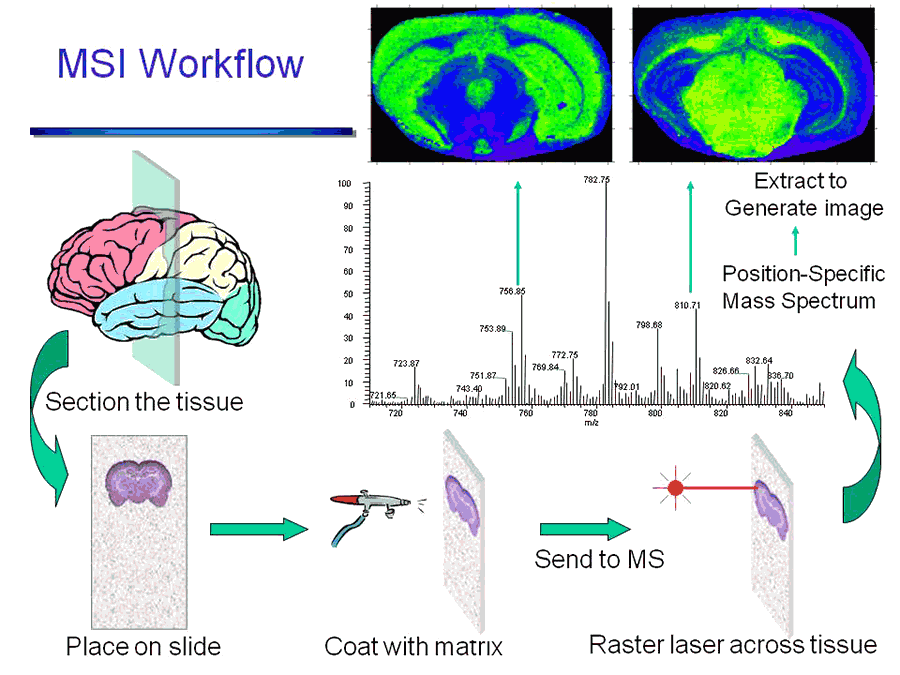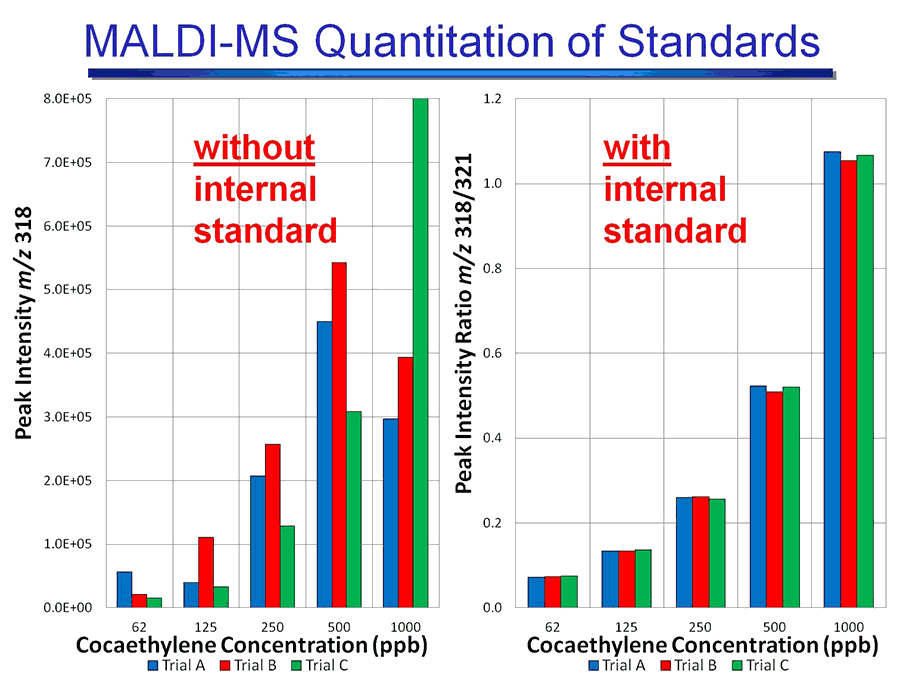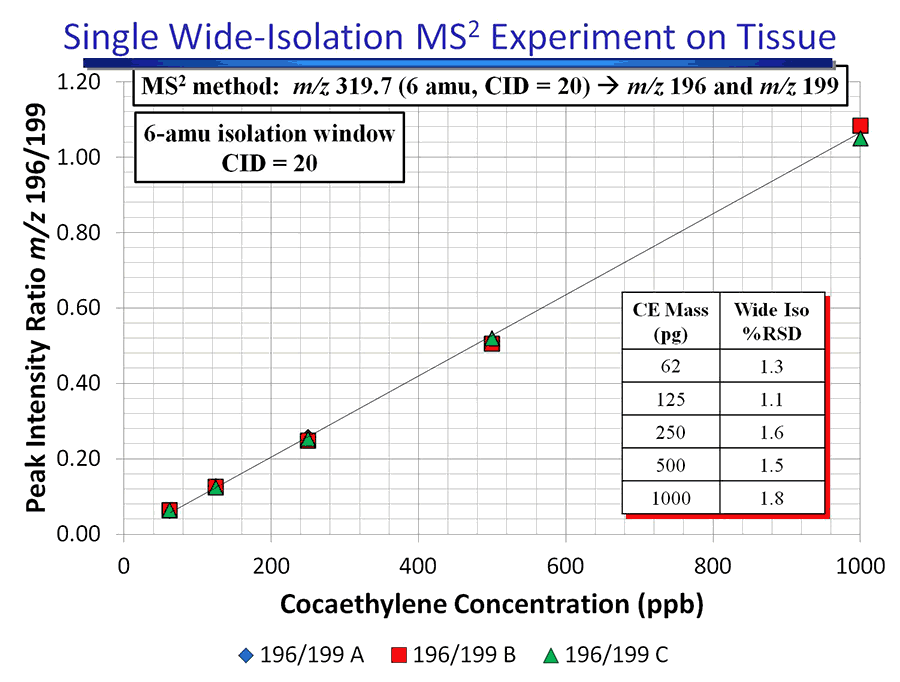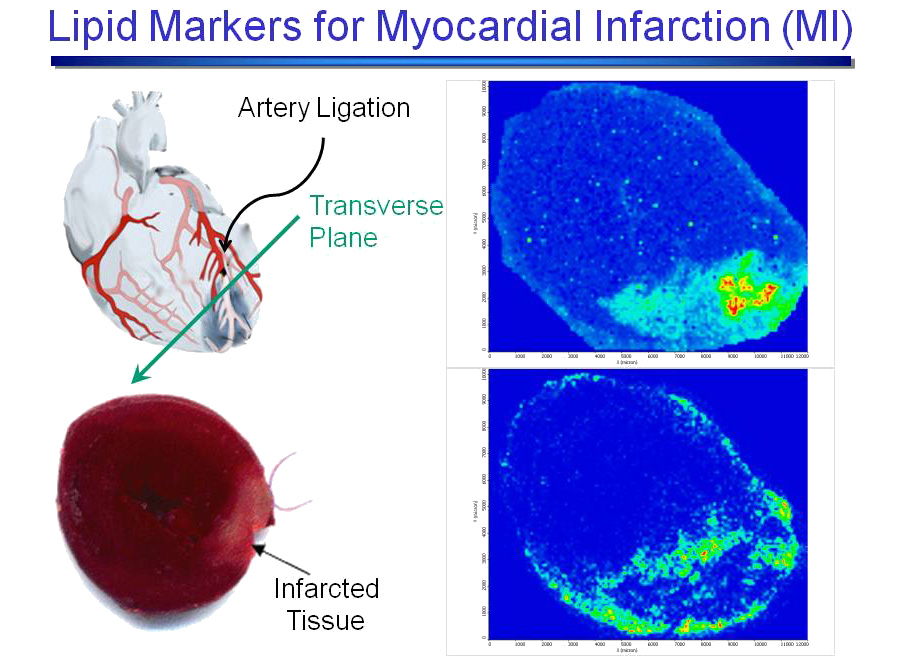Overview
A major focus of Yost group research is the development of instrumentation and methodologies for matrix-assisted laser desorption/ionization (MALDI) mass spectrometric imaging (MSI), a microprobe technique utilized to generate chemically selective images. In a traditional mass spectrometric imaging workflow (see below), thin samples are obtained and coated with a suitable MALDI matrix, typically a small organic molecule that readily absorbs UV light. The sample is then introduced into the mass spectrometer, wherein it is rastered with respect to a stationary ionization source (e.g., a Nitrogen laser), and a mass spectrum is recorded at each position across the sample. The signal intensity, represented by a color scale, for a single mass-to-charge can then be plotted versus the (X,Y) position on the tissue to generate a mass spectrometric image.

Methodology Development
The Yost group strives to advance MSI by improving steps in the MSI workflow. Possibly the most critical aspect of performing meaningful MSI is sample preparation (i.e., any processing prior to introduction to the mass spectrometer). In order to enhance sample preparation, the Yost group has developed a number of novel matrix coating techniques with the goal of producing simple, automated, and reproducible matrix application. Additionally, the Yost group is making strides in the quest to make MALDI MSI a quantitative technique via the use of internal standards and novel isolation techniques for tandem mass spectrometry.


Applications
The ability to preserve both chemical and spatial information makes MSI an attractive analytical technique for a variety of biomedical applications. In the Yost group, MSI applications include monitoring the spatial distribution of illicit and clinical drugs throughout tissue, characterizing the chemical changes resulting from disease, and monitoring the progression of lipid oxidation in response to external stimuli. In addition to biomedical studies, the Yost group has also applied MSI to the fields of cultural heritage and bioethanol conversion.
